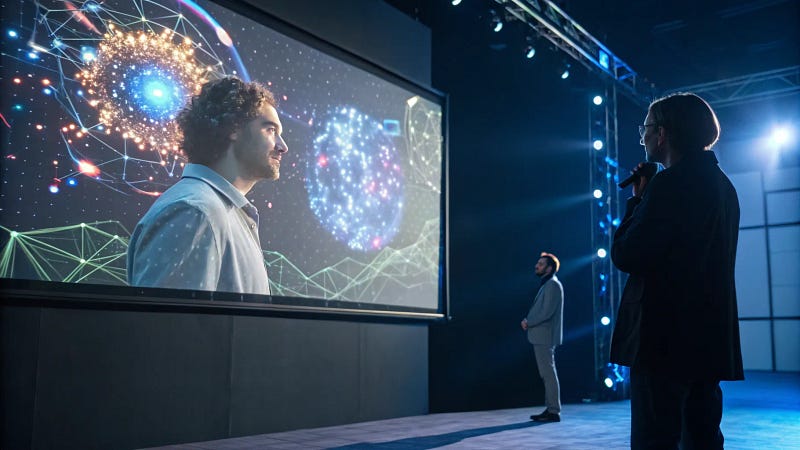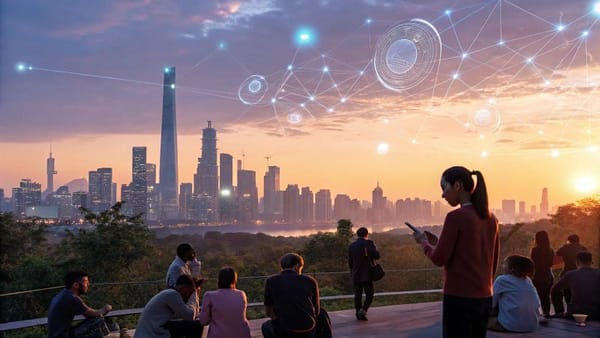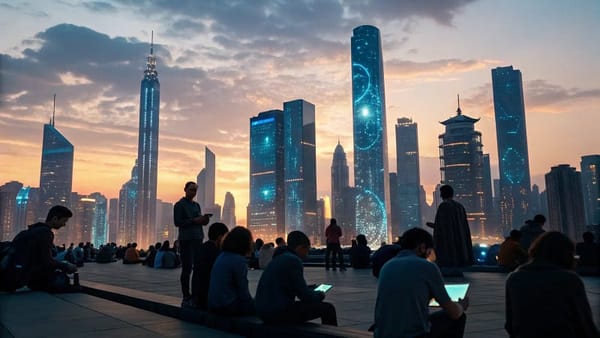AI Update: This Google Veo 3 Update is a GAME CHANGER: Here’s Why!
As enthusiasts and creators in the AI space, staying ahead of the latest AI trends is essential. Today, we dive into a groundbreaking…

As enthusiasts and creators in the AI space, staying ahead of the latest AI trends is essential. Today, we dive into a groundbreaking update from Google’s Veo 3 platform that promises to revolutionize how we create AI-generated videos. This update not only enhances the capabilities of text-to-video generation but introduces a powerful new feature: speech-enabled first-frame video using our own images. Let’s explore what this means, how it works, and why it’s a game changer for anyone working with AI video creation.

Table of Contents
- Introducing Speech in First Frame to Video: What’s New?
- Hands-On: Creating Videos from Your Own Images
- Creative Experimentation: From Mona Lisa to Steampunk Lamborghinis
- Why This Update Matters for AI Trends
- Getting Started and Learning More
- FAQ: Understanding the Google Veo 3 Update
Introducing Speech in First Frame to Video: What’s New?
The highlight of this update is the ability to upload any image and convert it into a talking video frame. Previously, AI video generation relied heavily on text prompts, which often led to inconsistencies in character appearance and motion. Now, by using a reference image as the first frame, we gain much greater control and consistency over the output.
This feature is available in the Veo 3 Fast option, which is cost-effective, consuming only 20 credits instead of 100 like the higher-quality setting. For those subscribed to the Pro plan, topping up credits is now easier, enabling more extensive experimentation without worrying about running out of resources.
Other improvements include enhanced audio coverage, fewer unwanted subtitles, and various bug fixes, all contributing to a smoother user experience.
Hands-On: Creating Videos from Your Own Images
Let’s walk through how we can use this new update effectively. Instead of the traditional text-to-video option, we select frames to video and upload an image — for example, a selfie or a character illustration. Adding a prompt like “I think Cloud Code is the best agentic AI coder at the moment,” combined with natural body language instructions, allows us to generate a video where the image moves subtly while speaking the dialogue.
While the image quality depends on the input file, the key benefit is the consistency of the character across scenes. The AI animates the face and lip-syncs the speech, creating a natural vlogging-style video that’s perfect for storytelling or content creation.
Enhancing Consistency with Flux Context Pro
To maintain character continuity across multiple scenes, the update integrates well with models like Flux Context Pro. This image-to-image editing model helps us transform the same character into different settings while preserving their appearance and style.
For example, we can start with a character image, then edit it to show the same person in a car selfie or a different environment. Uploading these edited frames as sequential video clips lets us build a consistent narrative flow. This is especially useful for vloggers or storytellers who want to maintain a familiar presence throughout their videos.
Creative Experimentation: From Mona Lisa to Steampunk Lamborghinis
Beyond vlogging, this update opens doors for creative projects. Using Flux, we experimented with the famous Mona Lisa image, placing it on a wall inside a Scottish castle setting from the 1950s, then zooming out to reveal a dining table scene with a couple having dinner. This layered approach demonstrates how we can build complex scenes step-by-step, enhancing realism and narrative depth.
Uploading these frames to Veo 3’s frames-to-video feature with dialogue such as:
“Ready to sell a painting?”
“Damn, I’ll miss her smile.”
“Me too, but we can’t turn down an offer like that.”
turns these static images into engaging conversations, showcasing the potential for storytelling and creative content generation.
Exploring Dynamic Angles: The Steampunk Lamborghini Example
Another fascinating use case is animating objects like vehicles. We generated a hyper-realistic image of a steampunk Lamborghini driving down a suburban street, then created multiple angles — front view, side view, and rear view — to simulate dynamic camera movements.
By uploading these images sequentially and using consistent dialogue prompts, we produced smooth transitions between angles, demonstrating how this update enables more cinematic video creation with minimal effort.
Why This Update Matters for AI Trends
This update may seem incremental at first glance, but it’s a significant leap forward in AI video generation for several reasons:
- Consistency: Using your own images ensures the character or object stays visually coherent across scenes, solving a major challenge in AI video creation.
- Cost Efficiency: The Veo 3 Fast mode reduces credit consumption, making it accessible for creators to experiment without hefty costs.
- Creative Freedom: Combining image uploads with flexible prompts allows for innovative storytelling and unique video concepts.
- Workflow Enhancement: Integrations with image editing models like Flux Context Pro streamline scene transitions and character editing.
Overall, this update is a pivotal moment in the evolution of AI video technology, making it easier and more affordable for creators to produce high-quality, consistent videos.
Getting Started and Learning More
For those eager to dive deeper into AI video creation, there are comprehensive learning resources available. An updated AI video course includes modules on the latest Veo 3 capabilities, strategies for viral AI videos, and tips for maintaining consistent characters. These resources are invaluable for anyone looking to capitalize on current AI trends and push creative boundaries.
Check out ai video course dot com for detailed tutorials and ongoing updates.
FAQ: Understanding the Google Veo 3 Update
What is the main feature of the new Google Veo 3 update?
The update introduces speech-enabled first-frame video, allowing users to upload any image and generate a video with that image speaking the provided dialogue.
How does using images improve AI video creation?
Uploading your own images provides visual consistency and makes it easier for the AI to generate coherent motion and speech, reducing artifacts and improving quality.
What is the difference between Veo 3 Fast and quality settings?
Veo 3 Fast uses fewer credits (20 vs. 100) and is more cost-effective, with quality that is almost as good, making it suitable for most projects.
Can I create multiple scenes with the same character?
Yes, by using image editing tools like Flux Context Pro alongside Veo 3, you can maintain character consistency across different scenes and backgrounds.
Is this update suitable for creative storytelling?
Absolutely. The ability to upload custom images and add speech enables complex narratives, character interactions, and dynamic scene transitions.
Where can I learn more about AI video creation using Veo 3?
Comprehensive courses and tutorials are available at ai video course dot com, which include the latest updates and strategies for making viral AI videos.
This article is based on comprehensive research derived in part from the referenced video This Google Veo 3 Update is a GAME CHANGER: Here’s Why




